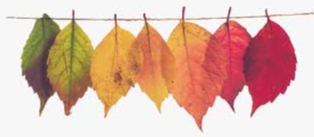This is the seventh in a series of articles written by Climate Action Coffee that seek to engage readers in the importance of pollinators and native plants. Today’s article focuses on creating a winter habitat for invertebrates.
Leave the Leaves

Now is the time to leave the leaves and allow a winter habitat to develop for those tiny critters we love so much when they turn into butterflies. Think twice before you rake, mow, and blow this year. Invertebrates rely on fallen leaves and other organic debris to cover and insulate them from the elements. Whatever your landscape, you can ensure that resources for nests and overwintering habitat are available. If you’ve provided native and diverse habitat for invertebrates and pollinators during the growing season, helping those invertebrates in the winter is almost as simple as doing nothing. Leave those habitats alone for winter.
Leaves
Important invertebrates will find a home in leaves a couple of inches thick, which mimics natural ecosystems.
Hollow stems
Stems hollow out when plants die off, providing cavities in which critters can make a home or nest.
Trees, branches and brush
Brush piles and trees provide winter habitat. Dead trees and hollowed branches are useful spaces.
Soil
While invertebrates are always plentiful in the soil, additional species will join in the dirt in winter, preferably insulated with leaves or brush.
Fall Cleanup In Moderation
Leaving the leaves and other plant debris doesn’t have to mean sacrificing your yard to the wilderness. The leaves don’t need to be left exactly where they fall. You can rake them into garden beds, around tree bases, or into other designated areas. Too many leaves can kill grass, but in soil they can suppress weeds, retain moisture, and boost nutrition.
Avoid shredding leaves with a mower. Raking or blowing (electric) are alternatives that will keep leaves whole for the best cover and protect the insects and eggs already living there.
If you decide you need to clean up the leaves and debris in spring, make sure you wait until late in the season so as not to destroy all the life you’ve worked to protect. You want to give the overwintering insects time to awaken from their hibernation. So, when night time temperatures are consistently in the 50 degree fahrenheit range and the soil is also 50 degrees, or, when the lawn begins to grow tall enough to mow, it is safe to rake.
Adapted from: https://xerces.org/blog/leave-the-leaves
“A genesis begins when a leaf falls from a tree. By chance, downward, it lands, and layer by layer, a blanket of life force starts forming that protects, insulates, and builds the soil. This is where the more-than-human world resides too, invisible to the naked eye. Through it, the tree remains intertwined in the perpetual flow of air, water, nutrients, carbon, and energy. A blanket that supports, and weaves the web of life.
Grows through, and becomes with, the leaf litter is pulsating – from microorganisms decomposing leaves to mushrooms decaying lifeless branches of trees. To insects seeking refuge and food, and birds foraging on them, to new matter pushing through decay. Beyond, countless interactions unfold, each with its own timing, and need to become.”
Excerpt from ORCA, Alexandra Ionescu
https://www.orcaliving.com/blogs/field-notes/leaves-biodiversity

